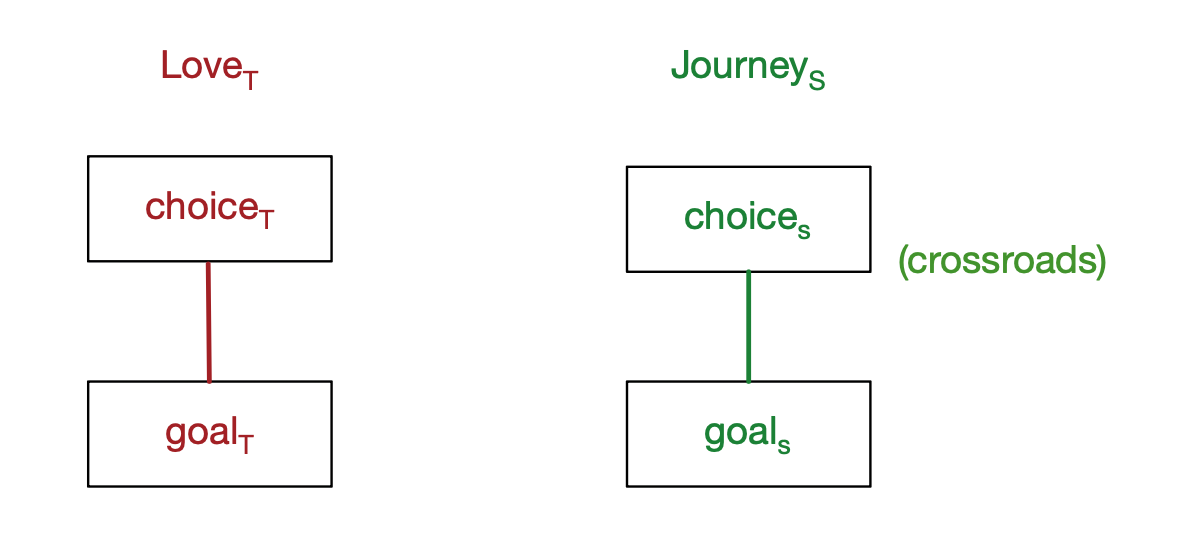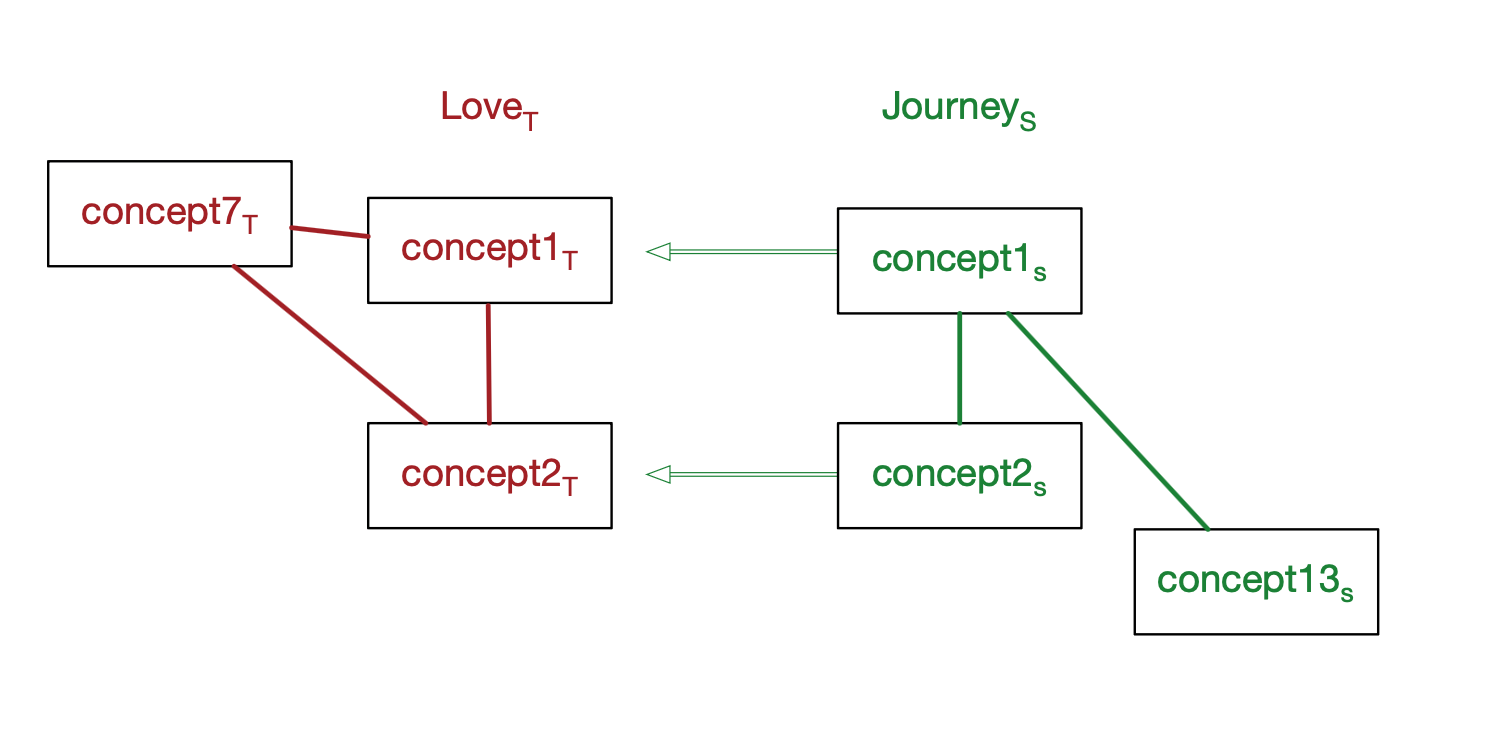The idea that human reasoning is largely (but not exclusively) based on Metaphor Systems. Originated by Michael J. Reddy ![]() essay on the Conduit Metaphor, taken up with vigor by Lakoff and Johnson.
essay on the Conduit Metaphor, taken up with vigor by Lakoff and Johnson.
Explained in a podcast episode, How Do Metaphors Work? ![]()
An example of such a system is Love Is a Journey. It's easy to list individual metaphors that are examples of this system:
* Look how far we’ve come since that first date. * Our marriage is at a crossroads. * This relationship isn’t going anywhere. * We may have to go our separate ways.
In the jargon, Love is the Target Domain and Journey is the Source Domain.

Two domains, T for target, S for Source
You can think of both domains as being concerned with similar things:

Ideas and relationships and attributes, oh my!
In a love affair, you'll face choices, just as you're likely to face in a journey. You also have goals – some sort of destination – in both cases. In the case of a love affair, the goal might be to have someone to care when you're on your deathbed. For a journey, it might be see the Longaberger Big Basket Building ![]() in east Newark, Ohio, USA.
in east Newark, Ohio, USA.
**The claim of conceptual metaphor is that often understanding and problem solving are done *in the source domain* and then translated into the target domain.**

Mapping between source and target domains (source on the right)
Note that not everything in the source domain has a corresponding thing in the target domain, and vice versa.
Let's explore that.
I think understanding what someone means is the easier case. Understanding the Crossroads Metaphor.
More interesting is using knowledge of the source domain to solve problems in the target domain. Problem-Solving in the Crossroads Metaphor
Especially when it comes to problem-solving, there are two snags:
1. The Extra Source Element.
2. The Missing Source Element.
----- See also: Conceptual Metaphor as Metaphor, Propositional Metaphor, Comparison: Conceptual and Propositional Metaphor, Abstract Source Domains, Comparison to Mathematics
DOT strict digraph rankdir=LR node [style=filled fillcolor=lightyellow penwidth=3 color=black fontname="Helvetica"] HERE NODE node [style=filled fillcolor=lightblue] WHERE /^Next/ LINKS HERE -> NODE node [style=filled fillcolor=white] HERE NODE WHERE /^Next/ LINKS HERE -> NODE node [style=filled fillcolor=white penwidth=3 color=black] LINKS HERE -> NODE node [style="filled,rounded,dotted" fillcolor=white] edge [style=dotted] HERE NODE BACKLINKS NODE -> HERE STATIC strict digraph {rankdir=LR node [style=filled fillcolor=lightyellow penwidth=3 color=black fontname="Helvetica"] "Dead Metaphor" node [style=filled fillcolor=lightblue] node [style=filled fillcolor=white penwidth=3 color=black] "Dead Metaphor" -> "Deadline" "Dead Metaphor" -> "Balls to the Wall" "Dead Metaphor" -> "Dead v. Poetic Metaphor" "Dead Metaphor" -> "Kinds of Metaphor" node [style="filled,rounded,dotted" fillcolor=white] edge [style=dotted] "Dead Metaphor" "Personal Context" -> "Dead Metaphor" "Understanding the Crossroads Metaphor" -> "Dead Metaphor"}